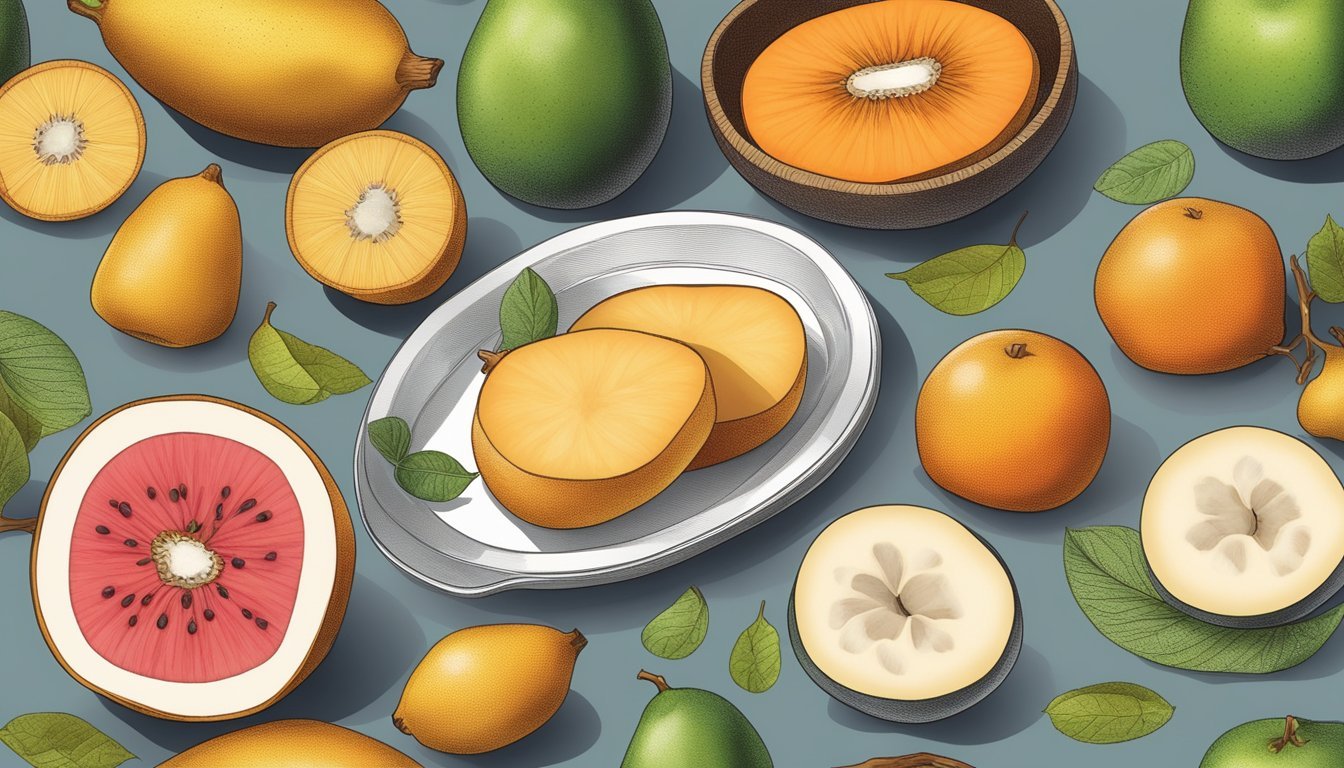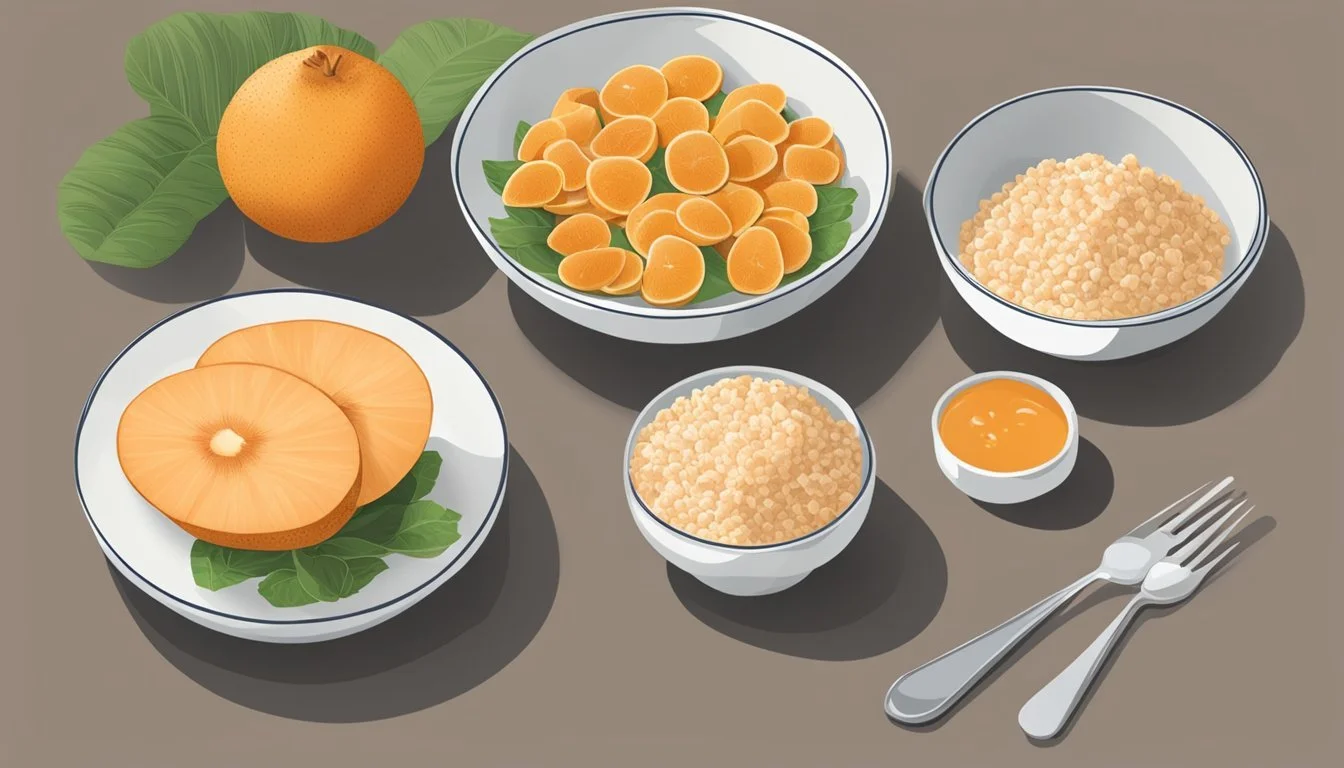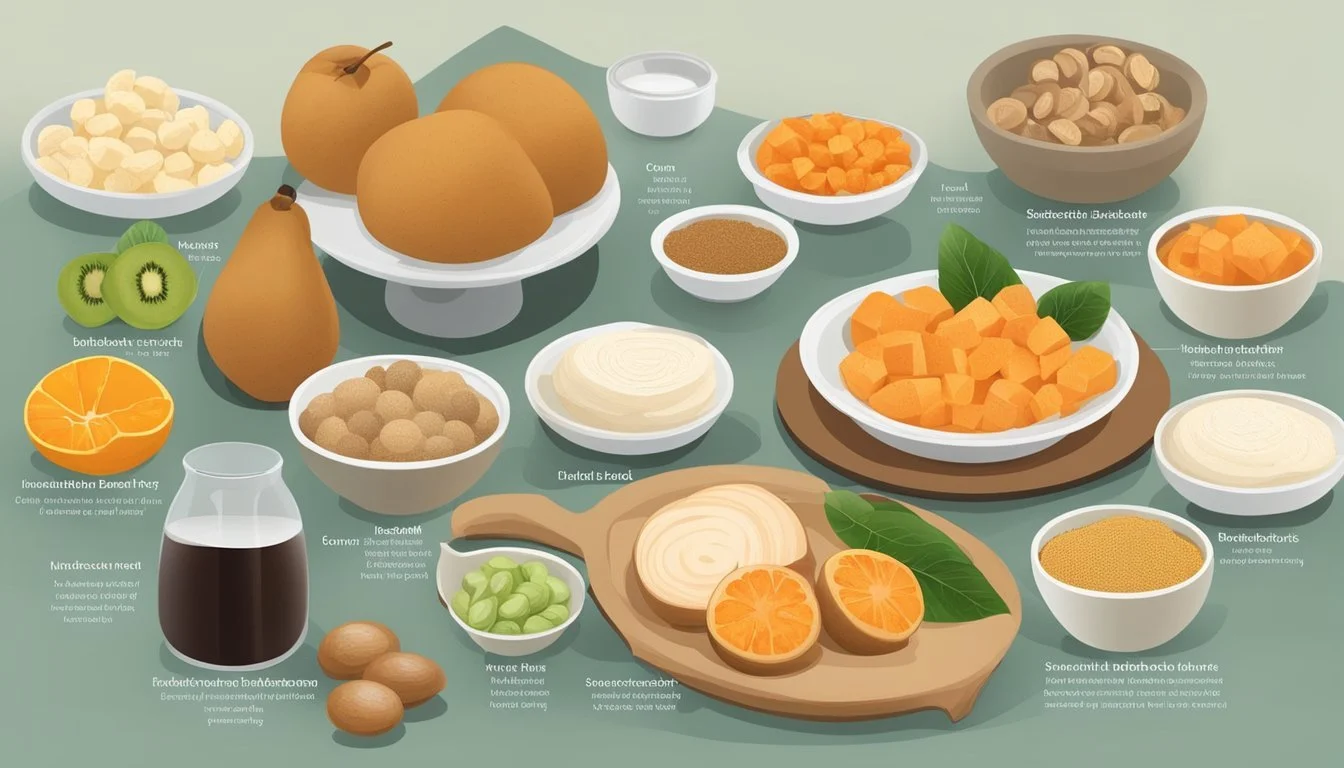Can Diabetics Eat Santol?
Understanding Its Impact on Blood Sugar
People with diabetes often need to be cautious about their fruit choices due to the potential impact on blood sugar levels. Santol, a tropical fruit rich in fiber and with a low glycemic index, shows promising attributes for those managing diabetes. High fiber content in Santol helps in slowing the absorption of sugar, making it a more diabetes-friendly option.
Santol's low glycemic index ensures that it does not cause a rapid spike in blood sugar levels, which is a crucial consideration for diabetics. This feature, combined with its nutrient profile, positions Santol as a beneficial addition to a diabetic diet, provided it's consumed in moderation.
Diabetics looking for variety in their fruit intake might find Santol to be a refreshing and suitable option. Its unique taste and health benefits, particularly in terms of blood sugar management, make it a worthwhile consideration alongside other low-sugar fruits.
Understanding Diabetes and Dietary Needs
Diabetes management requires careful dietary planning. Key points include the role of carbohydrates in blood sugar control, the importance of fiber, and achieving a balanced diet tailored to maintain stable blood sugar levels.
The Role of Carbohydrates in Blood Sugar Control
Carbohydrates have a direct impact on blood sugar levels. When consumed, they break down into glucose, which enters the bloodstream. For diabetics, monitoring carbohydrate intake is crucial. Different types of carbohydrates vary in how quickly they affect blood sugar levels.
The glycemic index (GI) measures how foods raise blood glucose. Low GI foods cause slower rises in blood sugar, making them preferable for people with diabetes. Examples include whole grains, legumes, and certain fruits like apples and berries.
Importance of Fiber in a Diabetic Diet
Fiber, particularly soluble fiber, is beneficial for diabetics. It slows the digestion of carbohydrates, leading to a gradual increase in blood sugar levels. This can help in maintaining stable blood sugar levels throughout the day.
High-fiber foods include:
Vegetables (e.g., broccoli, carrots)
Fruits (e.g., oranges, berries)
Whole grains (e.g., oats, barley)
Legumes (e.g., lentils, chickpeas)
Fiber also aids in digestion, helps control weight by promoting a feeling of fullness, and can lower cholesterol levels.
Balancing Nutrition for Diabetes Management
Achieving balanced nutrition involves more than just controlling carbohydrates and adding fiber. It includes a variety of nutrients to support overall health. Diabetics should aim for a balanced diet that includes:
Proteins: Lean meats, poultry, fish, and plant-based options like tofu and beans
Healthy Fats: Avocado, nuts, seeds, and olive oil
Non-starchy Vegetables: Spinach, zucchini, and cauliflower
Limiting sugar and processed foods is crucial. Instead, opt for quality carbohydrates, healthy fats, and a variety of nutrient-dense foods to maintain optimal blood sugar levels and overall health.
Santol Fruit Overview
The Santol fruit, known scientifically as Sandoricum koetjape, offers various nutritional benefits and unique characteristics. This fruit, part of the mahogany family, is particularly significant for those with dietary restrictions like diabetes.
Nutritional Profile of Santol
Santol fruit is low in fat and high in essential vitamins and minerals. It contains moderate amounts of carbohydrates and is rich in fiber, which helps manage blood sugar levels.
Nutritional Breakdown (Per 100g):
Calories: ~90 kcal
Fiber: ~4g
Protein: ~0.5g
Fat: ~0.5g
Sugar: ~15g
Santol also offers vitamins such as Vitamin C, which supports immune health, and Vitamin A, essential for vision. The minerals found in Santol include potassium and iron, necessary for muscle function and oxygen transport in blood.
Origin and Characteristics of Santol
Santol, or Sandoricum koetjape, originates from Southeast Asia and grows on tall, elegant trees between 15 to 40 meters in height. This tropical tree thrives in low-altitude climates.
The fruit is described as round to ovate, with a slightly flattened shape. Two main varieties exist: yellow and red, with the red variety being more common in markets. The tree's leaves are large, evergreen, and spiral-shaped, adding to its decorative appeal.
Santol trees can produce up to 20,000 fruits annually. The fruits are often used not just for eating but also for making jams, preserves, and drinks, highlighting their versatility and value.
Fruit Consumption for Diabetics
Diabetics can benefit from consuming fruits, but attention to types of fruits, glycemic index, and portion sizes is critical in managing blood sugar levels effectively.
Whole Fruit vs. Fruit Juice in Diabetes
Whole fruits are generally a better choice for diabetics compared to fruit juices. Whole fruits contain fiber, which helps slow the absorption of sugar and prevents spikes in blood sugar levels.
Eating an apple or a pear can provide a satisfying, fiber-rich snack. In contrast, fruit juice, even if it is 100% fruit juice, lacks fiber and can lead to rapid increases in blood sugar. For example, a small glass of orange juice can contain as much sugar as two whole oranges but without the beneficial fiber.
Glycemic Index of Common Fruits
The glycemic index (GI) is a measure of how quickly foods raise blood sugar levels. Low GI fruits are preferable for diabetics because they have a slower impact on blood glucose levels.
Low GI fruits:
Pears
Cherries
Plums
High GI fruits:
Watermelons
Pineapples
Ripe bananas
Understanding the GI of fruits can help diabetics make better choices in their diets.
Managing Portion Sizes
Portion control is fundamental in managing diabetes. Even fruits with low GI can spike blood sugar if consumed in large quantities. Recommended servings are typically around 1/2 cup for canned fruit (without added sugar) or 3/4 to 1 cup for fresh berries and melons.
Small portions of dried fruit can be included, but these are highly concentrated in sugar. For instance, raisins are nutrient-dense but should be limited to an eighth of a cup per serving due to their high carb content.
Using proper portion sizes ensures that diabetics can enjoy a variety of fruits without adversely affecting their blood sugar levels.
Fruits to Include in a Diabetic Diet
Including fruits in a diabetic diet can provide essential vitamins, minerals, and fiber while helping to manage blood sugar levels effectively. Knowing which fruits to choose can make all the difference in maintaining a healthy eating plan.
Recommended Fruits and Alternatives
Certain fruits are particularly beneficial for people with diabetes due to their low glycemic index and high fiber content. Berries like strawberries and blueberries are excellent choices, offering antioxidants and fiber without a significant sugar impact.
Citrus fruits such as oranges and grapefruits provide vitamin C and fiber. Apples and pears are high in soluble fiber, which helps to regulate blood sugar. Kiwis and plums also make the list for their combined fiber and nutrient content.
For those looking for alternatives, consider cherries, which are packed with antioxidants, or the versatile banana in controlled portions to avoid excessive sugar intake.
Benefits of Fiber-Rich Fruits
Fiber-rich fruits are crucial for a diabetic diet as they slow down the absorption of sugar, helping to prevent spikes in blood glucose levels. Apples and pears are excellent sources of soluble fiber. Oranges and kiwis not only provide essential vitamins but also contribute significantly to daily fiber intake.
Berries like raspberries and blackberries offer both soluble and insoluble fiber, aiding in digestion and blood sugar management. Including these fruits ensures a balanced diet rich in nutrients and fiber, essential for managing diabetes effectively.
Incorporating a variety of these fiber-rich fruits can support gut health and prevent complications related to diabetes, promoting overall well-being.
How to Incorporate Santol in a Diabetic Diet
Incorporating santol into a diabetic diet can offer various health benefits, including fiber and antioxidants, while managing blood sugar levels effectively. Below are the key methods to prepare and consume santol fruit beneficially.
Healthy Santol Recipes and Preparations
Santol Salad: Combine sliced santol with non-starchy vegetables like cucumbers, tomatoes, and carrots. Add a dressing of lemon juice, olive oil, and pepper. This adds fiber and nutrients without spiking blood sugar.
Santol Smoothie: Blend santol pulp with a green vegetable like spinach, a small piece of apple, and unsweetened almond milk. This drink provides fiber, vitamins, and antioxidants.
Baked Santol Chips: Slice santol thinly and bake until crispy. These make for a healthy, fiber-rich snack low in carbohydrates.
Understanding the Impacts of Santol on Blood Sugar
Santol fruit has a low glycemic index, meaning it causes a slower, smaller increase in blood sugar levels. This is critical for diabetics trying to manage their A1C.
The fruit is also rich in fiber, which helps in weight loss and digestion. Fiber promotes a feeling of fullness, reducing overall calorie intake, which can help manage blood sugar levels.
Lastly, the antioxidant properties of santol can help in reducing inflammation and oxidative stress, contributing to improved diabetes management and overall health.
It's essential to monitor serving sizes and consult with a healthcare provider to understand how to best incorporate santol into your specific meal plan.
Other Dietary Considerations for Diabetics
A well-balanced diet rich in nutrient-dense foods is essential for individuals managing diabetes. The focus should be on incorporating a variety of vegetables, whole grains, nuts, seeds, lean proteins, and healthy fats to promote overall health and stabilize blood sugar levels.
Incorporating a Variety of Nutrient-Dense Foods
Vegetables: Non-starchy vegetables like spinach, kale, broccoli, and peppers should be a significant part of every meal. These vegetables are low in carbohydrates and high in fiber, vitamins, and minerals.
Whole Grains: Opt for whole grains such as quinoa, brown rice, and oats over refined grains. Whole grains provide essential nutrients and fiber, which help maintain stable blood glucose levels.
Nuts and Seeds: Almonds, walnuts, chia seeds, and flaxseeds offer healthy fats and protein. They are also rich in magnesium, which can assist with insulin sensitivity.
Lean Proteins: Incorporate lean proteins like fish, chicken, and turkey. Foods like Greek yogurt and cheese can be included in moderation. These options are excellent sources of protein without excessive saturated fats.
Healthy Fats: Avocados, olive oil, and fatty fish such as salmon provide heart-healthy fats. These fats are beneficial for managing cholesterol levels and reducing the risk of heart disease and stroke, common complications of diabetes.







